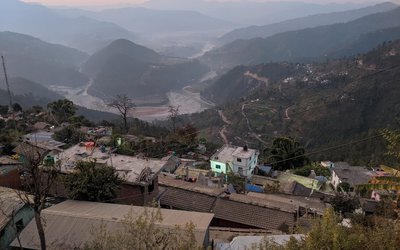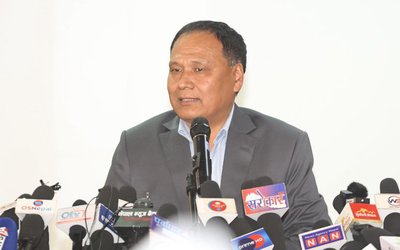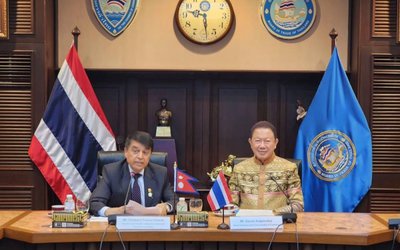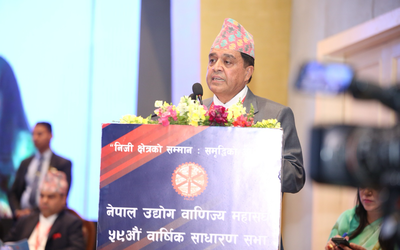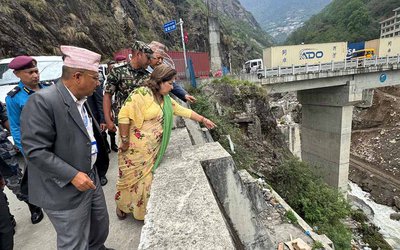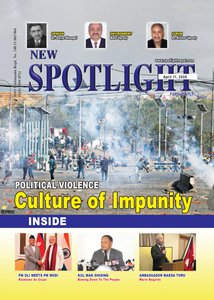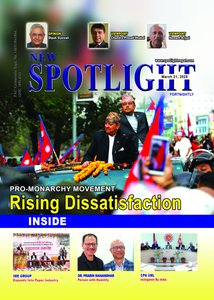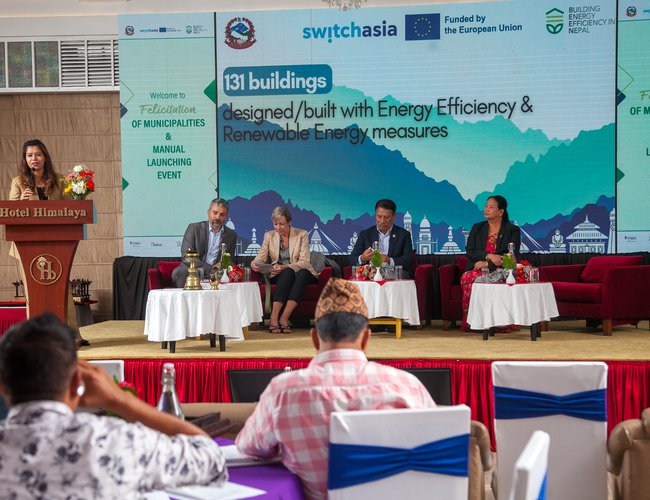
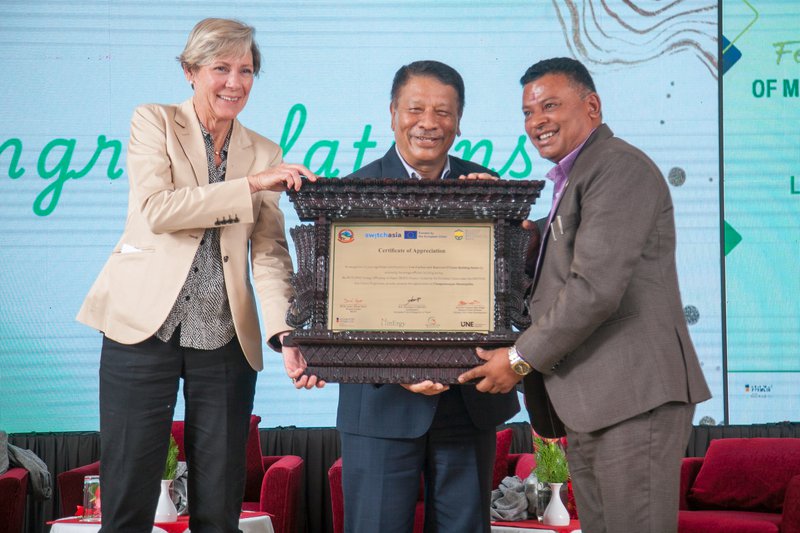
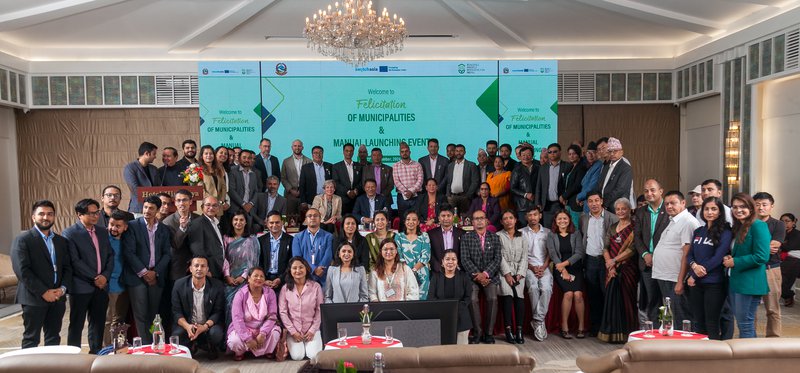
The BEEN project was initiated in Nepal in March 2022 as a pilot initiative aimed at assisting the country in reducing carbon emissions associated with building construction.
The initiative is implemented by the University of Innsbruck, Austria, in collaboration with MinErgy Pvt. Ltd. (Nepal), Green Knowledge Solutions Pvt. Ltd. (India), and Asociación Española de Normalización (Spain).
At that time, only a limited number of local leaders and entrepreneurs involved in brick manufacturing were cognizant of the construction of energy-efficient buildings.
Following the enactment of the federal constitution in 2015, the responsibility for approving and permitting building designs and construction shifted to local governments.
However, none of these local authorities had established laws or regulations specifically addressing energy-efficient buildings. Additionally, brick kiln operator possessed minimal knowledge regarding emerging technologies on energy efficiency.
After three years of dedicated engagement with 60 local governments across three provinces, as well as collaboration with the federal government and the private sector, the BEEN project has successfully facilitated change across various sector
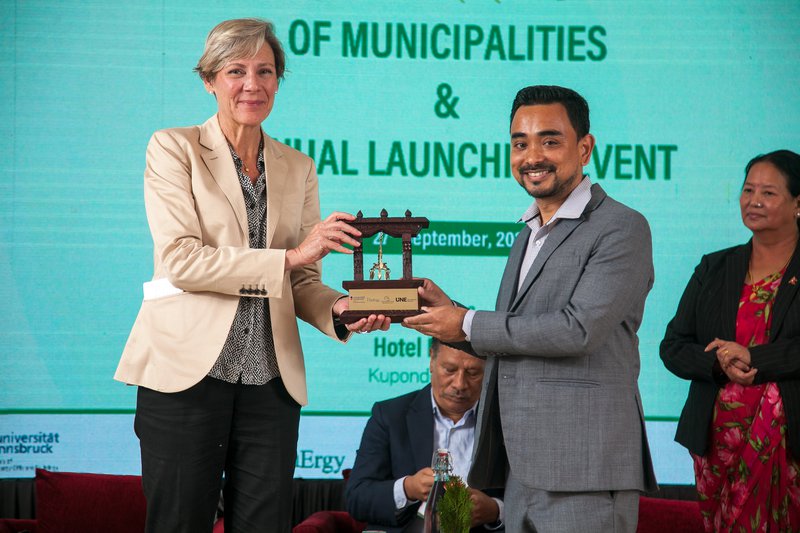
Celebration event
By recognizing the contributions of leaders of local municipalities and unveiling comprehensive manual for the production of energy-efficient bricks, the BEEN project has illustrated a pathway to progress.
Numerous municipalities within the project areas have begun to implement energy-efficient building bylaws, supported by BEEN’s technical expertise and guidance from specialists.
For the first time, twelve municipalities, including Pokhara Metropolitan City, Dhulikhel Municipality, Ghorahi Sub-Metropolitan City, and Hetauda Sub-Metropolitan Cities, have successfully enacted these bylaws. Meanwhile, Kathmandu Metropolitan City, Lalitpur Metropolitan City, and several other municipalities are currently in the process of drafting similar bylaws.
BEEN hosted event on September 27th to facilitate and launched manuals, can be referred as towards contribute to achieving g low carbon and resource-efficiency in the Nepalese building.
This event aimed to honor the municipalities that have pioneered efforts to diminish the carbon footprint of the building sector by effectively formulating and implementing energy-efficient building bylaws, achieved through collaboration and consultation with essential stakeholders, practitioners, and both national and international experts.
Prakash Man Singh, Deputy Prime Minister and Minister for Urban Development, and Veronique Lorenzo, the European Union Ambassador to Nepal, had distributed accolade to representatives from 12 municipalities for their exemplary leadership in the development and execution of energy-efficient building bylaws or guidelines. The BEEN Project is a four-year initiative aimed at curbing carbon emissions within Nepal's building sector.
DPM Singh emphasized that the initiatives will promote a low-carbon and resource-efficient building sector in Nepal. The adoption and execution of these policies represent a significant milestone and will aid in fulfilling the international commitments and targets established by the Government of Nepal in the Nationally Determined Contributions and Sustainable Development Goals (SDGs). It is important to note that these initiatives align with the priorities outlined in the 16th National Plan as well as the current annual plan and budget, which aim to implement various measures related to energy efficiency across all three levels of government in the building sector.
DPM Singh also stated that the project is instrumental in achieving the objective of zero emissions by 2045.
Given Nepal's diverse bio-climatic zones and the recent challenges posed by climate change, these initiatives are particularly pertinent. They aim to foster a supportive policy environment for stakeholders throughout the building value chain, thereby promoting and facilitating the development of climate-responsive and energy-efficient buildings.
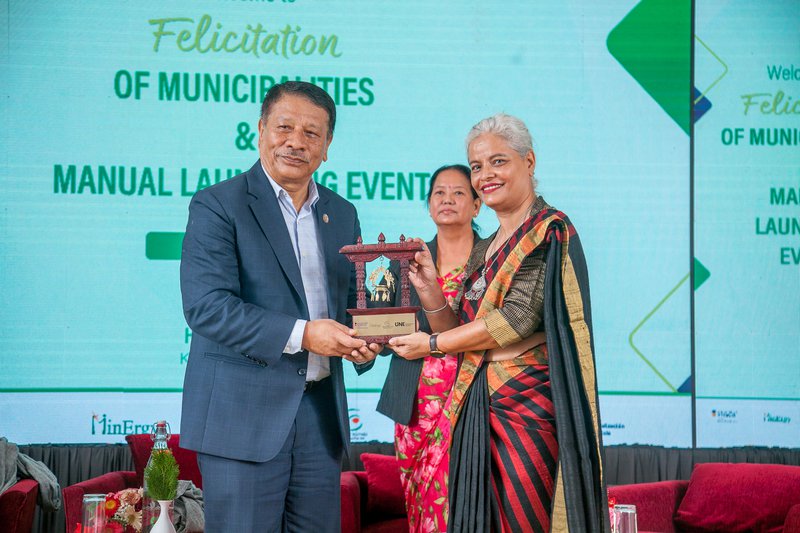
“It is essential for all three tiers of government to establish a framework that enhances efficiency and responsiveness to the populace's needs, while ensuring energy security and thermal comfort, and simultaneously mitigating adverse health effects,” said DPM Singh.
DPM Singh articulated this sentiment during his inaugural address, expressing hope that the leadership of the municipalities recognized would inspire other municipalities to undertake similar initiatives.
DPM Singh expressed gratitude to the European Union for its support of these vital initiatives and urged the EU to expand this initiative to additional provinces for broader impact.
Veronique Lorenzo, the EU Ambassador to Nepal, conveyed optimism that the project would contribute to a reduction in carbon emissions, noting that these efforts have played a significant role in decreasing the carbon footprint of Nepal's building sector.
Manju Devi Gurung, Deputy Mayor of Pokhara Metropolitan City, shared the municipality's perspective, highlighting that the project offered essential technical support for design preparation and provided training for the city's technicians.
“Pokhara is actively engaged in developing policies aimed at enhancing energy efficiency in buildings, with the belief that initiatives such as BEEN will facilitate the transformation of cities within Gandaki Province into more livable environments, rather than merely conventional urban areas.”
Dr. Daniel Neyer, the Project Leader of BEEN, delivered the opening and closing remarks, emphasizing the project's role in advancing the marketplace for energy-efficient building products.
Suyesh Prajapati, the Project Leader of BEEN, underscored the significance of the manuals and discussed the vital information they provide for brick kiln industrialists and Saswati Chetia, Team Leader of Greentech Knowledge and Solution Pvt. Ltd, underscored the significance of the insulation manual.
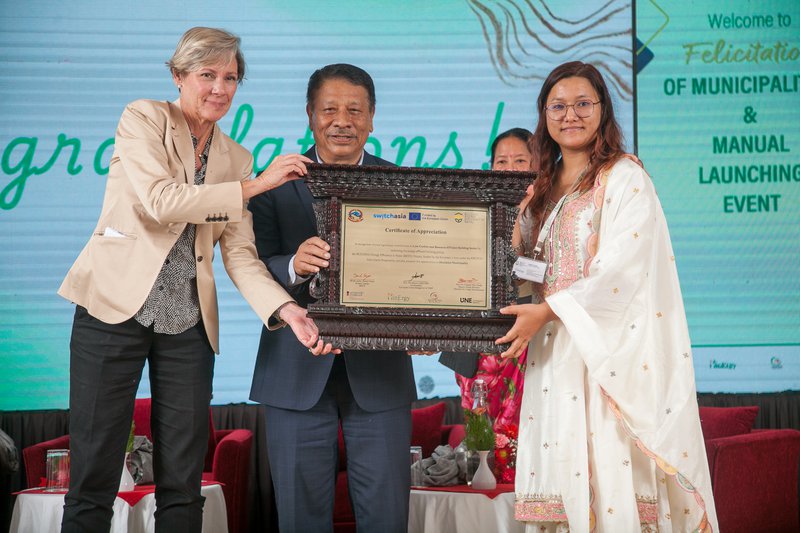
Jose Luis Vinuesa-Santamaria, Head of Cooperation at the EU Delegation to Nepal, expressed optimism that the manual will meet the necessary informational needs. The program commenced with the lighting of lamps by DPM Singh.
Unveiling of Manuals
Two distinct knowledge products were unveiled as part of the program. Jose-Luis Vinuesa-Santamaria, Head of Cooperation at the European Union, and Mahendra Kumar Sapkota Under Secretary of Ministry of Federal Affairs and General Administration (MoFAGA) and Secretary of BEEN Project Advisory Committee jointly launched the manuals.
These manuals offer detailed, step-by-step instructions for the production of hollow and perforated fired bricks. They encompass all aspects, from the selection of raw materials and preparation of clay to the necessary mechanical equipment, production techniques, drying and firing processes, quality control measures, and troubleshooting strategies.
The Hollow Fired Brick Production Manual delivers extensive guidelines for creating hollow and perforated bricks. In a similar vein, the "Manual on the Application of Building Insulation Materials" presents essential information regarding various insulation materials, their applications, and comprehensive design guidelines. Both of these knowledge products were unveiled at the event.
Research indicates that hollow bricks provide considerable environmental and economic advantages, such as decreased clay consumption, reduced carbon emissions, and enhanced energy efficiency for climate control in buildings. This handbook serves as a vital resource for brick manufacturers, construction professionals, and all stakeholders within the building sector, aiding in the endeavor to minimize the carbon footprint of building materials in Nepal.
The Manual on the Application of Building Insulation Materials similarly emphasizes the significance of insulation materials in enhancing the energy efficiency of buildings. It offers comprehensive information regarding the various types of insulation materials, their uses, and their thermal characteristics. The manual delivers explicit guidance on the selection and implementation of insulation materials, assisting architects, engineers, and builders in integrating energy-efficient designs into their projects.
The Insulation Manual offers a comprehensive overview of building insulation materials, detailing their thermal properties and their impact on energy efficiency and indoor comfort in buildings. It examines various types of insulation materials and the different ways they can be applied to roofs and walls. Additionally, it provides construction guidelines for these applications. The manual also aims to bridge the skills gap and strengthen the expertise of professionals involved in building design and construction. The Hollow brick Manual is intended to be a key resource for brick entrepreneurs interested in the production of hollow or perforated bricks in Nepal. It provides practical guidance on manufacturing hollow fired bricks, including the selection and preparation of raw materials, mechanical equipment required for production, detailed steps in the mechanical green brick production process for hollow bricks, recommendations for the firing process, quality control practices, and troubleshooting tips.
Transition Towards A Low-Carbon
BEEN promotes the transition towards a low-carbon, resource-efficient, and circular building sector by enhancing green technologies through capacity building, policy, and financial interventions. This initiative aligns with national climate change commitments, recognizing the significant role of the building sector. Additionally, it supports the European Union's new standardization strategy aimed at advancing European standards in various regions.
The project also contributes to the overarching goals of the European Green Deal (2019) and the EU Circular Economy Action Plan (2020) by advocating for circular economy strategies within the building sector.
Executed in close collaboration with the Ministry of Federal Affairs and General Administration (MoFAGA), the project aids both local and federal governments, along with the private sector, in fostering low-cost, resource-efficient building practices.
Through the retrofitting of existing structures, the construction of energy-efficient new buildings, and the enhancement of professional capacities, the BEEN project is making a notable impact on climate-friendly development in Nepal.
Four year Initiative
BEEN is a four-year initiative supported by the European Union through the SWITCH-Asia Grants Program. The primary objective of BEEN is to foster the development of low-carbon and resource-efficient construction practices in Nepal by promoting the design, construction, and renovation of environmentally sustainable buildings.
The project has been executed across 60 municipalities situated in four distinct bioclimatic zones, which encompass warm, temperate, cool temperate and cold climates within the Bagmati, Lumbini, and Gandaki provinces.
Climate-responsive building designs are crucial as Nepal experiences significant urbanization, with over 1.2 million new homes built in the past decade to accommodate the increasing urban population. This rapid construction has led to a new crisis that threatens energy supply.
The failure to design buildings with local bioclimatic conditions in mind has resulted in a standardized design approach, spanning from the hot plains at 150 meters to the frigid heights of 3500 meters.
Consequently, these buildings are subjected to uncomfortable thermal conditions and a growing reliance on energy-intensive heating and cooling systems.
A study indicates that in Kathmandu, where temperatures typically remain within a comfortable range, approximately 60% of the total energy consumption is allocated to heating and cooling.
The impending consequences of climate change, coupled with shifting lifestyles, will intensify the demand for energy. As Nepal strives to attain net-zero greenhouse gas emissions by 2045, it is crucial to confront these challenges through climate-responsive design and retrofitting. This approach will enable the building sector to transform into a sustainable, healthy, and energy-efficient environment that not only adapts to climate change but also plays a proactive role in its mitigation.
The Influence of Private Service Providers
Private service providers, encompassing the entire value chain from design to construction, significantly influence the development of Nepal's construction industry.
Moreover, the policies established by financial institutions, especially those related to housing loans, are pivotal in determining the design and construction of buildings. The building permit system, regulated by municipal bylaws, serves as a critical regulatory mechanism within the sector.
Funded by the European Union under the Switch Asia Program, the Building Energy Efficiency in Nepal (BEEN) hosted an event to felicitate 12 municipalities acknowledging their roles and contributions in making bylaws and policies favorable for the construction of energy efficient buildings.
BEEN has been actively engaged in enhancing the capabilities of micro, small, and medium enterprises (MSMEs) within the construction sector by fostering capacity building in collaboration with MSME associations. This partnership-driven approach promotes ownership and ensures long-term sustainability. The initiative employs innovative marketing strategies to highlight energy-efficient building practices across various bio-climatic zones, thereby raising public awareness and boosting demand for energy efficiency (EE) and renewable energy (RE) services and products. Additionally, collaboration with financial institutions seeks to establish preferential financing options, while the project aspires to institutionalize energy-efficient building design in 30 partner municipalities through the formulation of energy-efficient building regulations.
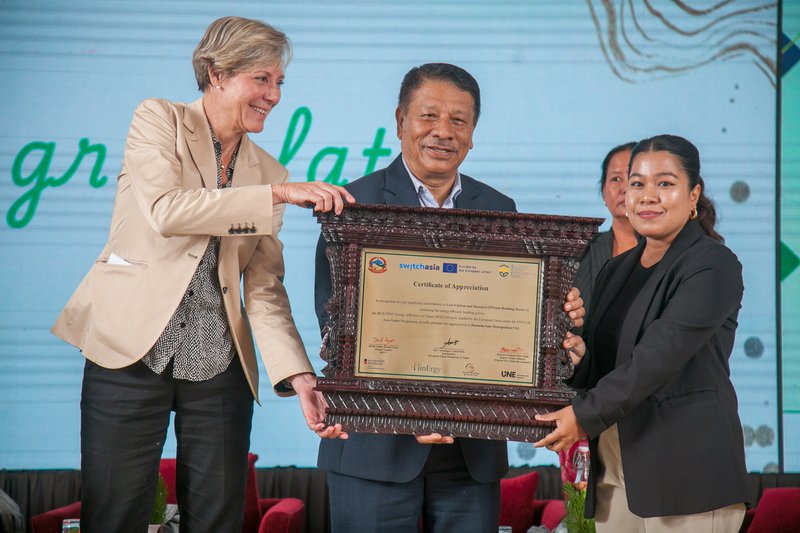
Project’s Achievements
In its third year, BEEN launched impactful awareness campaigns that convened key stakeholders for field visits to demonstrate buildings tailored to bioclimatic conditions. Significant accomplishments include the increased involvement of entrepreneurs in the production of hollow bricks, thereby advancing energy efficiency and resource-efficient construction practices.
A series of focus group discussions engaged 176 participants from eight categories of MSMEs within the construction value chain, yielding valuable insights that will inform the BEEN project’s strategies for capacity development and marketing initiatives.
BEEN is dedicated to enhancing the capabilities of micro, small, and medium enterprises (MSMEs) by providing quality improvement training for producers of Hollow Concrete Blocks (HCB) and Compressed Stabilized Earth Blocks (CSEB) for aspiring entrepreneurs. This initiative aims to increase the availability of resource-efficient building materials within the local market.
A technical manual, validated by a consortium of Nepali experts, academics, and government representatives, serves as a crucial resource for designers, who are key stakeholders in the construction industry. The Training of Master Trainers (TOT) program has empowered these trainers to educate architects and engineers on effective design strategies.
Furthermore, participants in the training workshop acquired knowledge regarding the design and implementation of efficient heating, ventilation, and air conditioning (HVAC) systems, as well as solar water heating systems.

Keshab Poudel
Poudel is the editor of New Spotlight Magazine.
- KUL MAN GHISING: Bowing Down To The People
- Apr 13, 2025
- POLITICAL VIOLENCE: Culture of Impunity
- Apr 11, 2025
- PM OLI MEETS PM MODI: No Progress
- Apr 09, 2025
- PM OLI’S THAILAND VISIT: Flip Flop
- Apr 08, 2025
- FM Dr. Deuba’s India Visit: Mission Aborted
- Mar 26, 2025
